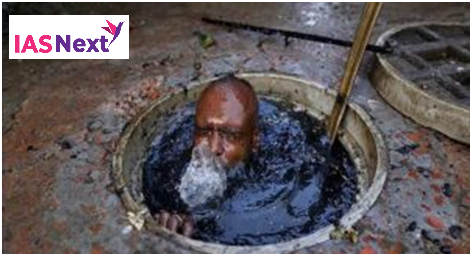CURRENT AFFAIRS
Get the most updated and recent current affair content on Padhaikaro.com
Manual scavenging
- IAS NEXT, Lucknow
- 15, Mar 2022

Reference News:-
Recently, three labourers in Mumbai, allegedly hired for manual scavenging, died after inhaling toxic fumes in a septic tank.
- Even though manual scavenging is banned in India, the practice is still prevalent in many parts of the country.
What is manual scavenging?
Manual scavenging is the practice of removing human excreta by hand from sewers or septic tanks.
- India banned the practice under the Prohibition of Employment as Manual Scavengers and their Rehabilitation Act, 2013 (PEMSR).
- The Act recognizes manual scavenging as a “dehumanizing practice,” and cites a need to “correct the historical injustice and indignity suffered by the manual scavengers.”
Why is manual scavenging still prevalent in India?
- The lack of enforcement of the Act.
- Exploitation of unskilled labourers.
- The practice is driven by caste, class and income divides.
Constitutional guarantee:
Article 21 of the Constitution guarantees ‘Right to Life’ and that also with dignity. This right is available to both citizens and non-citizens. The ban Manual Scavenging should, therefore, should be implemented in letter and spirit.
Other steps taken:
- In 1989, the Prevention of Atrocities Act became an integrated guard for sanitation workers; more than 90% people employed as manual scavengers belonged to the Scheduled Caste. This became an important landmark to free manual scavengers from designated traditional occupations.
- Safaimitra Suraksha Challenge: It was launched by the Ministry of Housing and Urban Affairs on World Toilet Day (19th November) in 2020.
- ‘Swachhta Abhiyan App’: It has been developed to identify and geotag the data of insanitary latrines and manual scavengers so that the insanitary latrines can be replaced with sanitary latrines and rehabilitate all the manual scavengers to provide dignity of life to them.
- SC Judgement: In 2014, a Supreme Court order made it mandatory for the government to identify all those who died in sewage work since 1993 and provide Rs. 10 lakh each as compensation to their families.